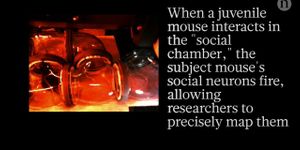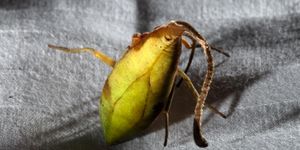First detected by Santiago Ramón y Cajal, there are strange droplets in the cytoplasm of cells that are not well understood. They are clumps of proteins that are amorphous, with no apparent structure and no membrane. There has been considerable interest in them lately, as they seem to be important to the activities and functions of the cell. They have also been linked to several diseases.
New work published in the journal eLife and led by Raúl Méndez and Xavier Salvatella, both researchers at the Institute for Research in Biomedicine in Barcelona (IRB), describes one example of the regulation and dynamics of these interesting protein aggregates. They have outlined how the protein clumps in this case make up an RNA binding protein called CPEB4.
CPEB4 is one of a family of proteins that are involved in many cell functions and have been associated with neurodegenerative diseases and cancer. CPEB4 seems to also function to activate or repress whether messenger RNA (mRNA) is translated into a protein by the cell – cells use messenger RNA as tool to copy genes from the genome so the cell can use its machinery to translate that copy into a protein. CPEB4 contains some sections that lack structure, remaining unfolded and flexible so that droplets can be both created and regulated during the cell cycle.
Previous work by these investigators demonstrated that CPEB4 controls the timeline of how cell division regulators are expressed. Jordina Guillén-Boixet, a postdoctoral fellow in Méndez's lab who is soon to continue work on these droplets in a lab at Max Planck in Germany, has spent seven years on the mechanics of CPEB4.
Guillén-Boixet found that CPEB4 proteins use their freeform parts to recognize one another, binding together to make the droplets. That sequesters mRNAs, keeping them from ribosomes, thus preventing protein translation. The characteristics of this aggregation allows for easy reversal when it’s the right time to translate RNA into proteins.
The research team has now determined exactly how the CPEB4 droplets form and break up during the cell cycle. They’ve also found the enzymes that phosphorylate various proteins needed to break down the aggregates and release the mRNAs. In the video above fro the new publication, live-imaging of a cell transfected with a GFP-tagged CPEB4 construct shows two liquid-like droplets fusing.
The researchers think that this research strengthens the veracity of two lines of thinking associated with the droplets. One is that the most RNA-binding proteins likely form these droplet organelles.
"[These organelles] were previously thought to be dispersed in the cytoplasm," explained Méndez. “This is the first study that characterizes how this process is regulated during the cell cycle for a protein that binds and regulates the translation of a family of mRNAs, and it paves the way for testing other families," he added.
The other idea is that only proteins with disordered regions can make such droplets. The majority of human proteins do have regions of disorder. "Evolution has selected disordered regions probably because they confer dynamics and versatility to proteins--greater speed to assemble and disassemble interactions--which is advantageous for signaling," explained Xavier Salvatella, a molecular biophysics and disordered proteins specialist at IRB Barcelona.
"These proteins are not freely floating around the cytoplasm but group in a certain way to form compartments, in a kind of order that enables them to perform cell functions. This is why the increasingly more precise description of these membrane-less organelles is so important in biology," the researchers added. Continuing work focuses on how these droplets contribute to disease states.
Sources:
AAAS/Eurekalert! via
IRB,
eLife









